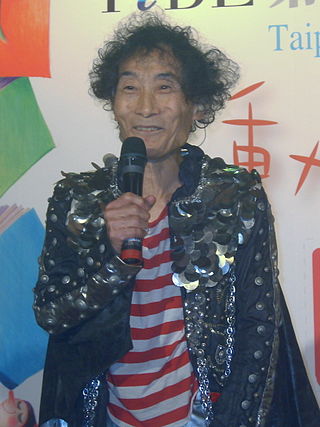
Kazuo Umezu or Kazuo Umezz is a Japanese manga artist, musician and actor. Starting his career in the 1950s, he is among the most famous artists of horror manga and has been vital for its development, considered the "god of horror manga". In 1960s shōjo manga like Reptilia, he broke the industry's conventions by combining the aesthetics of the commercial manga industry with gruesome visual imagery inspired by Japanese folktales, which created a boom of horror manga and influenced manga artists of following generations. He created successful manga series such as The Drifting Classroom, Makoto-chan and My Name Is Shingo, until he retired from drawing manga in the mid 1990s. He is also a public figure in Japan, known for wearing red-and-white-striped shirts and doing his signature "Gwash" hand gesture.

Machiko Hasegawa was a Japanese manga artist and one of the first female manga artists. She started her own comic strip, Sazae-san, in 1946. It reached national circulation via the Asahi Shimbun in 1949, and ran daily until Hasegawa decided to retire in February 1974. All of her comics were printed in Japan in digest comics; by the mid-1990s, Hasegawa's estate had sold over 60 million copies in Japan alone.
Taeko Watanabe is a Japanese manga artist. She made her professional debut in 1979 with the short story Waka-chan no Netsuai Jidai. In 1987, she won the Excellence Award at the 16th Japan Cartoonists Association Awards for her comedy series St. 14 Graffiti. She has twice received the Shogakukan Manga Award in the shōjo category: in 1991 for Hajime-chan ga Ichiban! and in 2003 for Kaze Hikaru.
Yellow Tanabe is a Japanese manga artist. She was an assistant for Mitsuru Adachi and Makoto Raiku and made her debut in 2002 with the short story Lost Princess. She is best known for the manga series Kekkaishi, which has been adapted as an anime television series and translated into many languages. She published a one-shot story in the inaugural issue of the revival of Monthly Shōnen Sunday in May 2009.
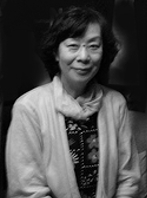
The Year 24 Group is a grouping of female manga artists who heavily influenced shōjo manga beginning in the 1970s. While shōjo manga of the 1950s and 1960s largely consisted of simple stories marketed towards elementary school-aged girls, works by members of the group significantly developed shōjo manga by expanding it to incorporate new genres, themes, and subject material. Narratives and art styles in shōjo manga became more complex, and works came to examine topics such as psychology, gender, politics, and sexuality. Manga produced by the Year 24 Group brought the shōjo category into what scholars have described as its "golden age".

Fujio Akatsuka was a Japanese manga artist. Known as the Master of Gag Manga, he created many popular manga such as Osomatsu-kun, Himitsu no Akko-chan, and Tensai Bakabon.
Reiko Okano is a Japanese manga artist.
Hideko Mizuno is one of the first successful female Japanese shōjo manga artists. She was an assistant of Osamu Tezuka staying in Tokiwa-sō. She made her professional debut in 1955 with Akakke Kōma Pony, a Western story with a tomboy heroine. She became a prominent shōjo artist in the 1960s and 1970s, starting with White Troika, which serialized in Margaret in 1963.
Kimiko Uehara is a prominent Japanese shōjo and josei manga artist. She is best known for shōjo series such as Maiko no Uta, Lovely Mari-chan, Marybell, Honoo no Romance, Lolly no Seishun, and Yumedokei. She received the 1990 Shogakukan Manga Award for children's manga for Lovely Mari-chan. Uehara is cited by Naoko Takeuchi, author of Sailor Moon, as an influence, especially her dialog in Lolly no Seishun and Honoo no Romance.
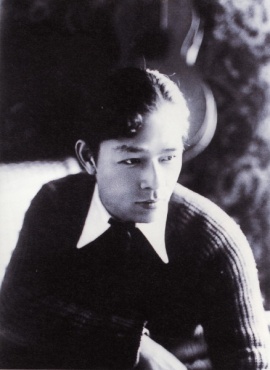
Katsuji Matsumoto was a Japanese illustrator and shōjo manga artist. Matsumoto's 16-page The Mysterious Clover (1934) is recognized as a pioneering work in the field of manga, but he is best known for his shōjo manga Kurukuru Kurumi-chan, serialized from 1938 to 1940, and again from 1949 to 1954.
Miyako Maki is a Japanese manga artist, and one of the earliest female manga artists. During the 1960s, Maki contributed significantly to the development of shōjo manga, and became one of the most popular shōjo authors of her generation. She later became a pioneer in manga for adults, producing gekiga and redikomi towards the end of that decade.
Rinko Ueda is a Japanese manga artist who does mainly shojo manga. Her works are primarily serialized in Margaret magazine, with series published in collected volumes by Shueisha, though she has also been featured in fellow Shueisha publication Ribon, as well as illustrating the novel adaptation of her own Stepping on Roses series in Cobalt.
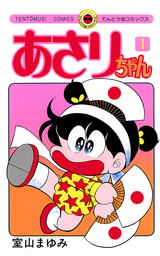
Asari-chan (あさりちゃん) is a Japanese shōjo slice of life manga series by Mayumi Muroyama. With a total circulation of 28 million copies, it is one of the best-selling manga. It was adapted into an anime television series and an anime film. The TV series was produced by Toei Animation a subsidiary of Toei Company, and directed by Kazumi Fukushima. The anime follows Asari, a normal but stupid elementary school fourth-grade girl who does not get along with her family.

Shōjo manga is an editorial category of Japanese comics targeting an audience of adolescent females and young adult women. It is, along with shōnen manga, seinen manga, and josei manga, one of the primary editorial categories of manga. Shōjo manga is traditionally published in dedicated manga magazines, which often specialize in a particular readership age range or narrative genre.

California Story is a Japanese manga series written and illustrated by Akimi Yoshida, serialized in Bessatsu Shōjo Comic from 1978 to 1981.
Jun Mayuzuki is a Japanese manga artist. Her most famous work is the series After the Rain, which was serialized in Shogakukan's Monthly Big Comic Spirits magazine in June 2014, before moving to the magazine Weekly Big Comic Spirits in January 2016 and finished in March 2018. In 2018, she won the 63rd Shogakukan Manga Award in the general category with the manga.

Zenryaku Milk House is a Japanese slice of life romantic comedy manga series written and illustrated by Yumiko Kawahara.

Tora and Mike is a Japanese manga series written and illustrated by Nekomaki. It has been serialized once in a month in Shogakukan's Josei Seven magazine since May 17, 2018 issue and has been collected in three tankōbon volumes. A short original net animation (ONA) series adaption by Charaction premiered on August 5, 2021, and it is streaming on manga's official Twitter account. Also, this manga was the judges' choice of manga category in 21st Japan Media Arts Festival Awards.

Fuichin Tsaichen! (フイチン再見!) is a Japanese manga series written and illustrated by Motoka Murakami. It was serialized in Shogakukan's seinen manga magazine Big Comic Original from March 2013 to March 2017, with its chapters collected in ten tankōbon volumes.
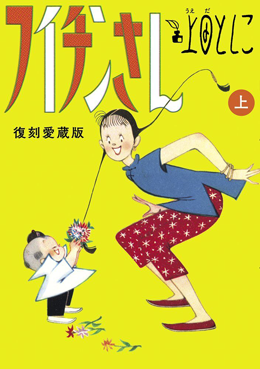
Fuichin-san is a Japanese manga series written and illustrated by Toshiko Ueda. It was originally serialized in the shōjo (girls) magazine Shōjo Club from 1957 to 1962. Set in early 20th century Manchuria, the series depicts the adventures of Fuichin, the daughter of a servant of a wealthy family, and Li Chu, the son of this family. The series won the 5th Shogakukan Manga Award in 1959, and was adapted into an anime film in 2004.














